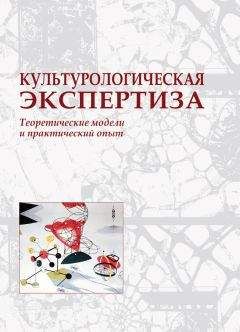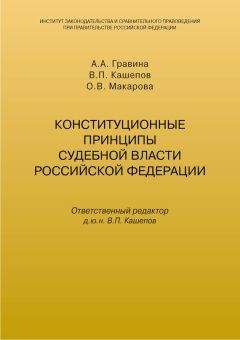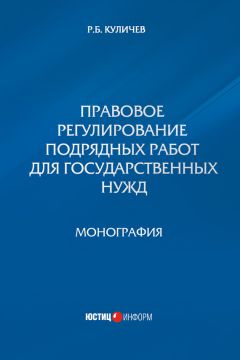Олдерт Фрай - Детекция лжи и обмана

Помощь проекту
Детекция лжи и обмана читать книгу онлайн
Ruva, C. & Bryant, J. B. (1998). The impact of age, speech style, and question form on perceptions of witness credibility and trial outcome. Paper presented at the AP-LS Biennial Conference, Redondo Beach, March 1998.
Saarni, C. (1984). An observational study of children's attempts to monitor their expressive behavior. Child Development, 55,1504–1513.
Saxe, L. (1991). Science and the TCB polygraph: a theoretical critique.Integrative Physiological and Behavioral Science, 26, 223–231.
Saxe, L. (1994). Detection of deception: polygraph and integrity tests.Current Directions in Psychological Science, 3, 69–13.
Schneider, S. M. & Kintz, B. L. (1911). The effect of lying upon foot and leg movement. Bulletin of the Psychonomic Society, 10, 451–453.
Schooler, J. W., Gerhard, D. & Loftus, E. F. (1986). Qualities of the unreal.Journal of Experimental Psychology: Learning, Memory, and Cognition, 12, 111–181.
Siegman, A. W. & Reynolds, M. A. (1983). Self-monitoring and speech in feigned and unfeigned lying. Journal of Personality and Social Psychology, 45,1325–1333.
Sleek, S. (1998). Psychologists debate merits of the polygraph. Monitor, June 30.
Smith, A. (1983). Nonverbal communication among black female dyads: an assessment of intimacy, gender and race. Journal of Social Issues, 39, 55–61.
Smith, H. J., Archer, D. & Costanzo, M. (1991). "Just a hunch": accuracy and awareness in person perception. Journal of Nonverbal Behavior, 15, 3-19.
Soppe, H. J. G. (1995a). Getuigenissen van kinderen in zedenzaken 1: De herin-nering van kinderen en hoe hen te horen. De Psycholoog, 30, 213–219.
Soppe, H.J. G. (1995b). Getuigenissen van kinderen in zedenzaken 2: Bepaling van de geloofwaardigheid. De Psycholoog, 30, 261–265.
Soppe, H.J. G. (1991). Het verhoren van kinderen in zedenzaken. In P. J. Van Koppen, D. J. Hessing & H. F. M. Crombag (Eds), Het hart van de zaak: Psychologic van hetrecht. Deventer: Kluwer, 352–316.
Soppe, H.J. G. & Hees-Stauthamer, J. C. (1993). De geloofwaardigheid van getuigenissen van jeugdige slachtoffers van zedenmisdrijven. Tijdschrift voor Ontwikkelingspsychologie, 20, 1-25.
Sporer, S. L. (1991). The less traveled road to truth: verbal cues in deception detection in accounts of fabricated and self-experienced events.Applied Cognitive Psychology, 11, 313–391.
Steller, M. (1989). Recent developments in statement analysis. In J. C. Yuille (Ed.), Credibility assessment. Deventer: Kluwer, 135–154.
Steller, M. & Boychuk, T. (1992). Children as witnesses in sexual abuse cases: investigative interview and assessment techniques. In H. Dent & R. Flin (Eds), Children as witnesses. New York: John Wiley, 41–13.
Steller, M. & Kohnken, G. (1989). Criteria-Based Content Analysis. In D. С Raskin (Ed.), Psychological methods in criminal investigation and evidence. New York: Springer-Verlag, 211–245.
Steller, M. & Wellershaus, P. (1996). Information enhancement and credibility assessment of child statements: the impact of the cognitive interview on criteria-based content analysis. In G. Davies, S. Lloyd-Bostock, M. McMurran & C. Wilson (Eds), Psychology, law, and criminal justice: international developments in research and practice. Berlin: de Gruyter, 118–121.
Steller, M., Haenert, P. & Eiselt, W (1981). Extraversion and the detection of information. Journal of Personality and Social Psychology, 21, 334–342.
Steller, M, Wellershaus, P. & Wolf, T. (1988). Empirical validation of Criteria-Based Content Analysis. Paper presented at the NATO Advanced Study Institute on Credibility Assessment in Maratea, Italy, June 1988.
Sternberg, K. J., Lamb, M. E., Hershkowitz, I., Esplin, P. W, Redlich, A. & Sunshine, N. (1996). The relationship between investigative utterance types and the informativeness of child witnesses. Journal of Applied Developmental Psychology, 11,439–451.
Sternberg, K. J., Lamb, M. E., Hershkowitz, I., Yudilevitch, L., Orbach, Y., Larson, C., Esplin, P. W. & Hovav, M. (in press). Effects of introductory style on children's abilities to describe experiences of sexual abuse. Child Abuse and Neglect.
Stiff, J. B. & Miller, G. R. (1986). "Come to think of it…": interrogative probes, deceptive communication, and deception detection.Human Communication Research, 12, 339–351.
Stiff, J. В., Gorman, S., Krizek, B. & Snider, E. (1994). Individual differences and changes in nonverbal behavior: unmasking the changing faces of deception. Communication Research, 21, 555–581.
Stiff, J. В., Hale.J. L., Garlick, R. &Rogan, R. (1990). Effect of cue incongruence and social normative influences on individual judgments of honesty and deceit. Southern Communication Journal, 55, 206–229.
Stiff, J. В., Kim, H.J. & Ramesh, C. N. (1992). Truth biases and aroused suspicion in relational deception.Communication Research, 19, 326–345.
Stiff, J. В., Miller, G. R., Sleight, C, Mongeau, P., Garlick, R. & Rogan, R. (1989). Explanations for visual cue primacy in judgments of honesty and deceit.Journal of Personality and Social Psychology, 56, 555–564.
Streeter, L. A., Krauss, R. M., Geller, V., Olson, С & Apple, W. (1911). Pitch changes during attempted deception. Journal of Personality and Social Psychology, 24, 12–21.
Suengas, A. G. & Johnson, M. K. (1988). Qualitative effects of rehearsal on memories for perceived and imagined complex events. Journal of Experimental Psychology: General, 117, 311–389.
Taylor, R. & Vrij, A. (1999). The effects of varying stake and cognitive complexity on beliefs about the cues to deception. Manuscript submitted for publication.
Toris, C. & DePaulo, В. M. (1985). Effects of actual deception and suspiciousness of deception on interpersonal perceptions.Journal of Personality and Social Psychology, 41,1063–1013.
Trankell, A. (1912). Reliability of evidence. Stockholm: Beckmans.
Tully, B. (1998). Reliability of criteria-based content analysis of child witness statements: Cohen's kappa doesn't matter. Legal and Criminological Psychology, 3,183–188.
Undeutsch, U. (1961). Beurteilung der Glaubhaftigkeit von Aussagen. In U. Undeutsch (Ed.), HandbuchderPsychologic. Vol. 11. ForensischePsychologie. Gottingem Hogrefe, 26-181.
Undeutsch, U. (1982). Statement reality analysis. In A. Trankell (Ed.), Reconstructing the past: the role of psychologists in criminal trials. Deventer: Kluwer, 21–56.
Undeutsch, U. (1984). Courtroom evaluation of eyewitness testimony.International Review of Applied Psychology, 33, 51–61.
Undeutsch, U. (1989). The development of statement reality analysis. In J. C. Yuille (Ed.), Credibility assessment, Dordrecht: Kluwer, 101–121.
Van Koppen, P.J., Boelhouwer, A.J. W., Merckelbach, H. L. G.J. & Verbaten, M. N. (1996). Leugendetectie in actie: Hetgebruik van depolygroaf in depraktijk. Leiden: Nederlands Studiecentrum Criminaliteit en Rechtshandhaving.
Van Rossum, W. (1998). Verschijnen voor de rechter: Hoe het hoort en het ritueel van Turkse verdachten in de rechtszaal. Amsterdam: Uitgeverij duizend en een.
Volbert, R. & Van der Zanden, R. (1996). Sexual knowledge and behavior of children up to 12 years: what is age-appropriate? In G. Davies, S. Lloyd-Bostock, M. McMurran & C. Wilson (Eds), Psychology, law, and criminal justice: international developments in research and practice. Berlin: de Gruyter, 198–216.
Vrij, A. (1991). Misverstanden tussenpolitie en allochtonen: Sociaal-psychologische aspecten van verdacht zijn. Amsterdam: VU Uitgeverij.
Vrij, A. (1993a). Credibility judgments of detectives: the impact of nonverbal behavior, social skills and physical characteristics on impression formation. Journal of Social Psychology, 133,601-6 VI.
Vrij, A. (1993b). Students, prisoners and professional lie detectors' beliefs about verbal correlates of deception. Unpublished data.
Vrij, A. (1994). The impact of information and setting on detection of deception by police detectives. Journal of "Nonverbal Behavior, 18,111–131.
Vrij, A. (1995). Behavioral correlates of deception in a simulated police interview. Journal of Psychology: Interdisciplinary and Applied, 129,15–29.
Vrij, A. (1996). De rechercheur als leugendetector: Een overzicht van onder-zoeken nar nonverbaal gedrag en misleiding. Modus: Tijdschrift voor Recherche en Forensische Wetenschappen, 5,4–9.
Vrij, A. (1991a). Detecting lies in partners, friends and strangers. Unpublished data.
Vrij, A. (1991b). Gender differences in self-oriented and other-oriented lies. Unpublished data.
Vrij, A. (1998a). Interviewing suspects. In A. Memon, A. Vrij & R. Bull, Psychology and law: truthfulness, accuracy and credibility. Maidenhead: McGraw-Hill, 124146.
Vrij, A. (1998b). Telling and detecting lies: some future directions in research. Forensic Update, 54,14–19.
Vrij, A. (1998c). To lie or not to lie. Psychologie, 11, 22–25.
Vrij, A. & Akehurst, L. (1996). Hand movements during deception: some recent insights. Paper presented at the Sixth European Conference on Psychology and Law. Italy, Sienna, August 1996.
Vrij, A. & Akehurst, L. (1998). Verbal communication and credibility: Statement Validity Assessment. In A. Memon, A. Vrij & R. Bull, Psychology and law: truthfulness, accuracy and credibility. Maidenhead: McGraw-Hill, 3-31.
Vrij, A. & Bull, R. (1992). Beliefs about verbal correlates of deception: British students. Unpublished data.
Vrij, A. & Fischer, A. (1995). The expression of emotions in simulated rape interviews. Journal of Police and Criminal Psychology, 10, 64–61.
Vrij, A. & Graham, S. (1991). Individual differences between liars and the ability to detect lies. Expert Evidence: The International Digest of Human Behaviour Science and Law, 5,144–148.
Vrij, A. & Heaven, S. (1999). Vocal and verbal indicators of deception as a function of lie complexity. Psychology, Crime and Law, 5, 203–215.
Vrij, A. & Holland, M. (1999). Individual differences in persistence in lying and experiences while deceiving. Communication Research Reports, 3, 299–308.
Vrij, A. & Lochun, S. (1991). Neuro-lingui'stisch verhoren. In P. J. Van Koppen, D. J. Hessing&H. F. M. Crombag (Eds), Het hart van dezaak: Psychologie van het recht. Deventer: Kluwer, 493–505.
Vrij, A. & Mann, S. (in press). Lying when the stakes are high: deceptive behavior of a murderer during his police interview. Applied Cognitive Psychology.
Vrij, A. & Mann, S. (1999). Whokilled 'myrelative? Policeofficers 'abilityto detectreal-life high-stake lies. Manuscript submitted for publication.
Vrij, A. & Semin, G. R. (1996). Lie experts' beliefs about nonverbal indicators of deception. Journal of Nonverbal Behavior, 20, 65–80.
Vrij, A. & Taylor, R. (1999). Pofice officers' and students' beliefs about telling and detecting little and serious lies. Manuscript submitted for publication.
Vrij, A. & Van Wijngaarden, J. J. (1994). Will truth come out? Two studies about the detection of false statements expressed by children. Expert Evidence: The International Digest of Human Behaviour, Science and Law, 3, 18–84.
Vrij, A. & Winkel, F. W. (1990). Culturele verschillen in spreekstijl van Surinamers en Nederlanders: De relatie tussen «zakelijkheid» en «misleiding»; bij een politieverhoor. Recht der Werkelijkheid, 11, 3-15.
Vrij, A. & Winkel, F. W. (1991). Cultural patterns in Dutch and Surinam j nonverbal behavior: an analysis of simulated police/citizen encounters.Journal of Nonverbal Behavior, 15, 169–184.
Vrij, A. & Winkel, F. W. (1992a). Crosscultural police-citizen interactions: the influence of race, beliefs and nonverbal communication on impression formation. Journal of Applied Social Psychology, 22, 1546–1559.
Vrij, A. & Winkel, F. W. (1992b). Social skills, distorted perception and being suspect: studies in impression formation and the ability to deceive. Journal of Police and Criminal Psychology, 8, 2–6.

























